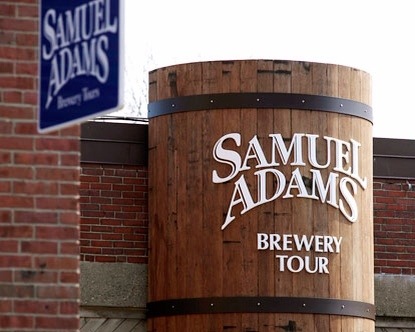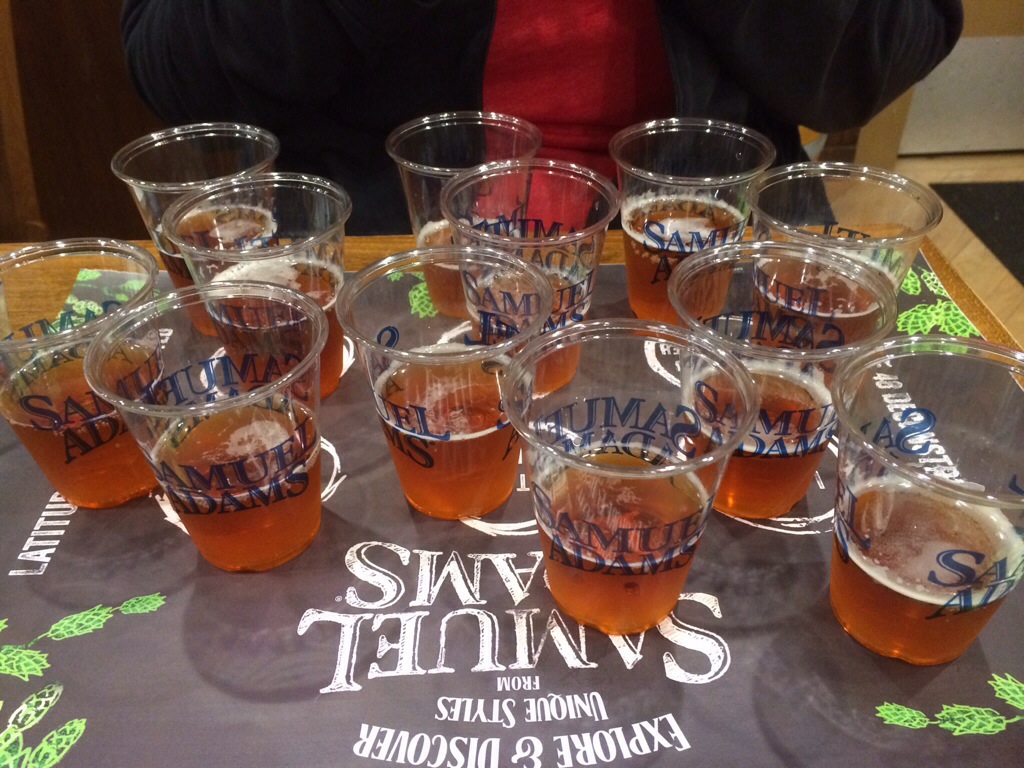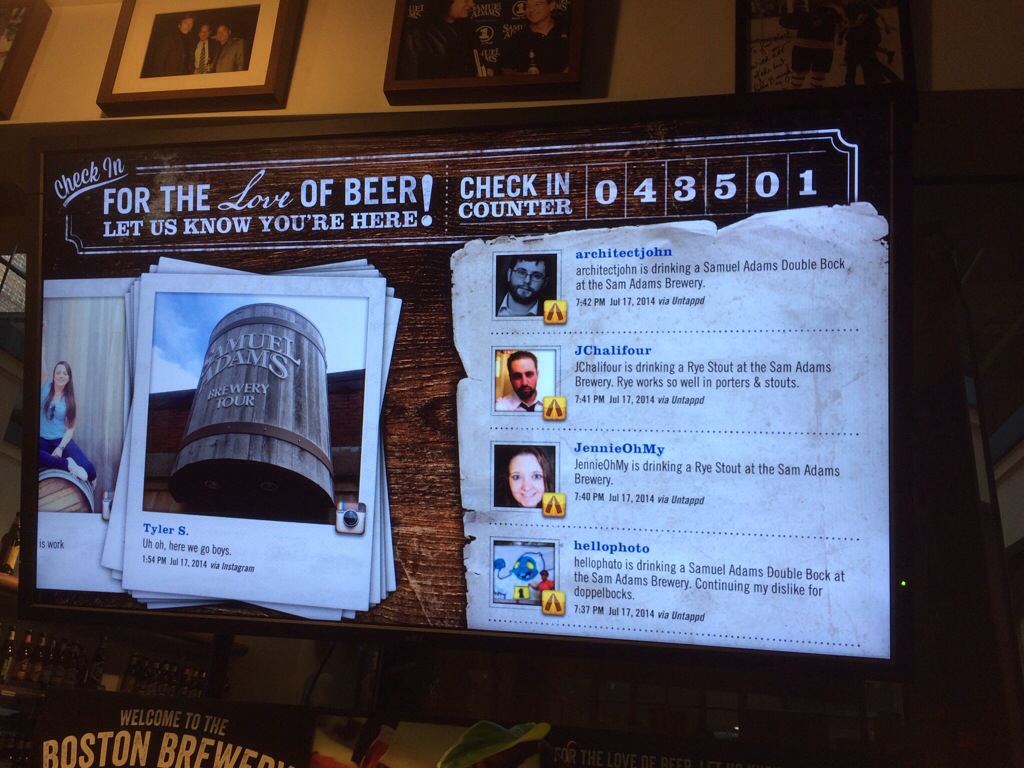 |
| The Samuel Adams Boston Brewery in Jamaica Plain. |
 |
| Perfect flight for homebrewers. |
The Lattitude 48 flight was perfect for homebrewers. When Samuel Adams decided to come out with an IPA, it was before there were so many categories and sub-categories of IPAs like there are now. The original concept for Latitude 48 was to come out with an IPA with hops from all over the world grown along the 48th parallel. The beer has five different hops: East Kent Goldings, Hallertau Mittelfrueh, Mosiac, Zeus and Simcoe. They then "deconstructed" the beer by releasing single hop versions with each hop. This is a perfect way to see for yourself the flavor and aroma of each hop, and then see how they blend together.
The base beer has a firm malt backbone and I thought the East Kent Goldings didn't quite cut through the malt sweetness. The noble German Hallertau hops are not the hops you find in either an English or American IPA; I was quite surprised how well they worked on their own in an IPA. The three other hops are common in IPAs and all worked well. The Simcoe was predictably dank. I've only brewed with Simcoe once. It is a potent hop, but a hop that is better when it's blended with other hops.
I have probably visited the brewery a half dozen times or so over the years. When I first went there, they poured Boston Lager, the wildly under-appreciated Boston Ale, and their seasonal, which was Octoberfest at the time. The only beer they sold at the brewery were bottles of the Barrel Room Collection, the only beers they still brew in Boston (Boston Beer operates breweries in Ohio and Pennsylvania, where most of their beer is made). Over the years, Samuel Adams has done a great job improving the brewery experience. Last winter, they had two of the Longshot beers on tap. Last week, they had several beers you can only find at the brewery. Additionally, they sell growlers of these beers at their expanded gift shop.
 |
| Jennie and I checking in on brews. |
At the brewery, I had a sample of their Rye Stout. Usually rye is used in German roggenbier or in a rye-PA. If you have ever had Ipswich Ale's Rye Porter, you know how well rye can work in a darker beer; this beer was no exception. We took home a growler of the Double Pils and Belgian Wit. The Double Pils was proof that a German or Continental style beer can be scaled up and can deliver the type of bold flavor that is more commonly associated with imperial stouts or IPAs. As a fan of the Samuel Adams White Ale, I was interested to see how the Belgian Wit would be different. The Belgian Wit reminded me a lot of Allagash White. While the White Ale almost certainly used the Samuel Adams house ale yeast strain, the Belgian Wit probably used a Belgian strain.
For most of us from this part of the world, our first introduction to craft beer was Samuel Adams. The changes at the brewery and the changes in their marketing reflect the changes in the marketplace. In the '80s and '90s, the challenge was to get the Bud drinker who didn't know or understand what craft beer or micro brewed beer was to try a Boston Lager. Now the challenge is to convince the craft beer drinker that they haven't "sold out" and that Sam Adams is still innovating. There are plenty of craft beer drinkers who turn their nose up at Sam Adams.
If you honestly don't think the beer is that good, then fine. Who am I to argue? If you don't think what Sam Adams does is craft beer or look down on them because of your own pretensions, then it's your loss. As I've expanded my palate and started home brewing, I don't drink nearly as much Sam Adams as I used to, but I still enjoy several of their beers. Typically, I'll pick up at least one 12-pack of their seasonal and their seasonal sampler when that comes out. Boston Lager is my go-to at airports or chain restaurants where the beer selection may be otherwise lacking.
As a home brewer, I got a few things from the trip. It was great to see how the different hops in the Latitude 48 smell and taste without having to brew with all of them. Beer & Wine Hobby has come out with their single-hop series, which is also a great way to learn about different hop varieties. The Belgian Wit was a clear illustration of the impact yeast can have on otherwise similar beers. My winter beers have always been wanting; this year, I might take a cue from the Rye Stout and use some rye. It's certainly something I'll consider over the next few months.
Follow me on Instagram @wouldbebrewmaster
Like The Would-be Brewmaster on Facebook
Share what beers you are drinking with me on Untappd
No comments:
Post a Comment